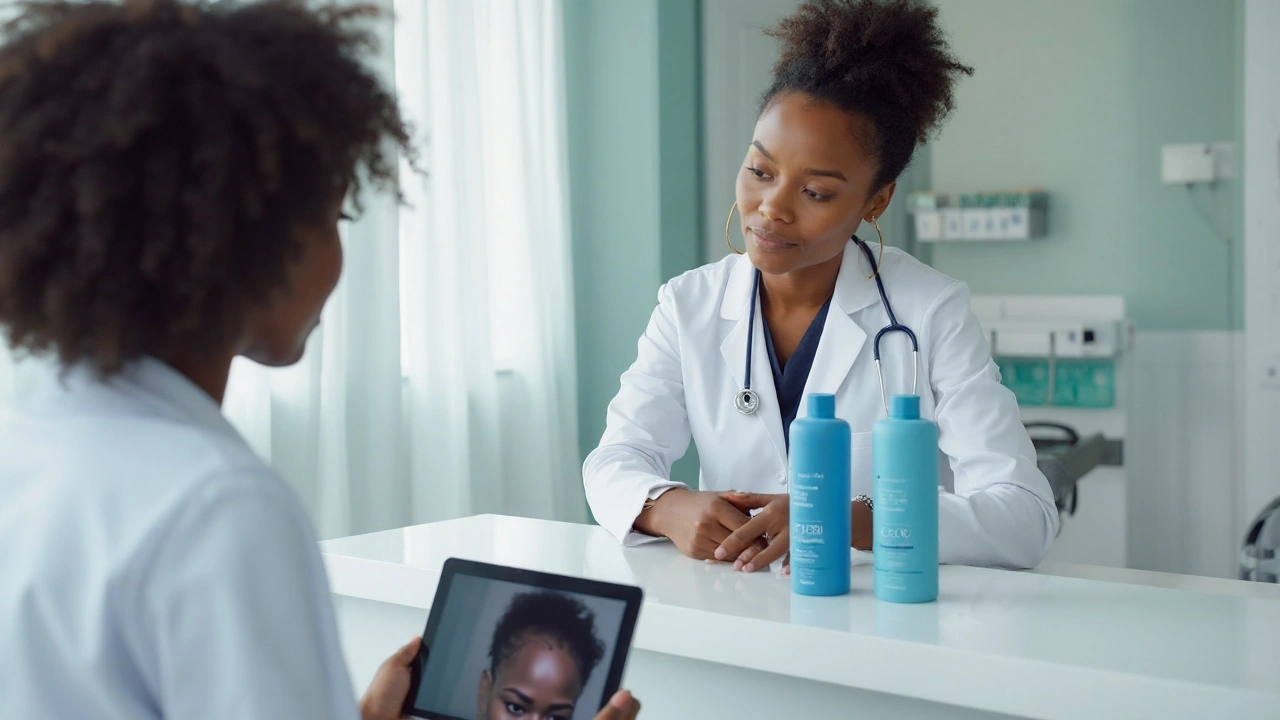Ketoconazole Shampoo: What It Is and When to Use It
If you’ve dealt with stubborn dandruff, itchy scalp, or a fungal infection on your head, you’ve probably heard of ketoconazole shampoo. It’s an antifungal rinse that kills the yeast Malassezia and other fungi that cause flaking, redness, and irritation. Doctors often recommend it for dandruff, seborrheic dermatitis, and sometimes for tinea capitis (scalp ringworm) in kids.
The formula usually contains 1% or 2% ketoconazole. The lower strength works for mild dandruff, while the stronger version tackles tougher infections. It’s available over the counter in many places, but a prescription may be needed for the 2% version or for longer treatment periods.
How to Use Ketoconazole Shampoo Correctly
Using the shampoo right makes a big difference. Here’s a simple step‑by‑step guide:
1. Wet your hair and scalp thoroughly. 2. Apply a generous amount of shampoo—enough to cover the entire scalp. 3. Massage gently for about 30 seconds. No need to scrub hard; you just want the product to touch every spot. 4. Leave it on for 3–5 minutes. This gives the antifungal ingredient time to work. 5. Rinse well with lukewarm water.
For most people, the routine is once daily for a week, then twice a week to keep symptoms at bay. If your doctor prescribed a specific schedule, follow that instead.
Don’t use the shampoo on broken skin, around the eyes, or on other body parts unless instructed. If you miss a dose, just continue with the next one—no need to double up.
Safety Tips and Possible Side Effects
Ketoconazole shampoo is safe for most adults, but a few things can go wrong:
- Scalp irritation: Some users report mild burning, itching, or redness. If it gets worse after a few days, stop using it and talk to a clinician.
- Dryness or oily hair: The shampoo can change your scalp’s natural oil balance. Using a gentle conditioner after rinsing can help.
- Hair texture changes: Rarely, hair may feel softer or a bit brittle. Usually this resolves when you stop the shampoo.
- Allergic reaction: Very uncommon, but watch for swelling, hives, or severe itching. Seek medical help right away if this happens.
Pregnant or nursing moms should check with their provider before starting, as high‑dose ketoconazole isn’t recommended during pregnancy. Children under 12 years typically use the 1% version only, and a doctor should supervise treatment for scalp infections.
Avoid mixing ketoconazole shampoo with other medicated topicals unless your doctor says it’s okay. Some acne or psoriasis creams can increase irritation when used together.
In summary, ketoconazole shampoo is a proven tool for tackling fungal scalp problems. Use it as directed, keep an eye on any irritation, and pair it with a mild conditioner if you notice dryness. When used correctly, most people see a clear reduction in flakes and itching within a week.

- Sep, 17 2025
- Comments 9